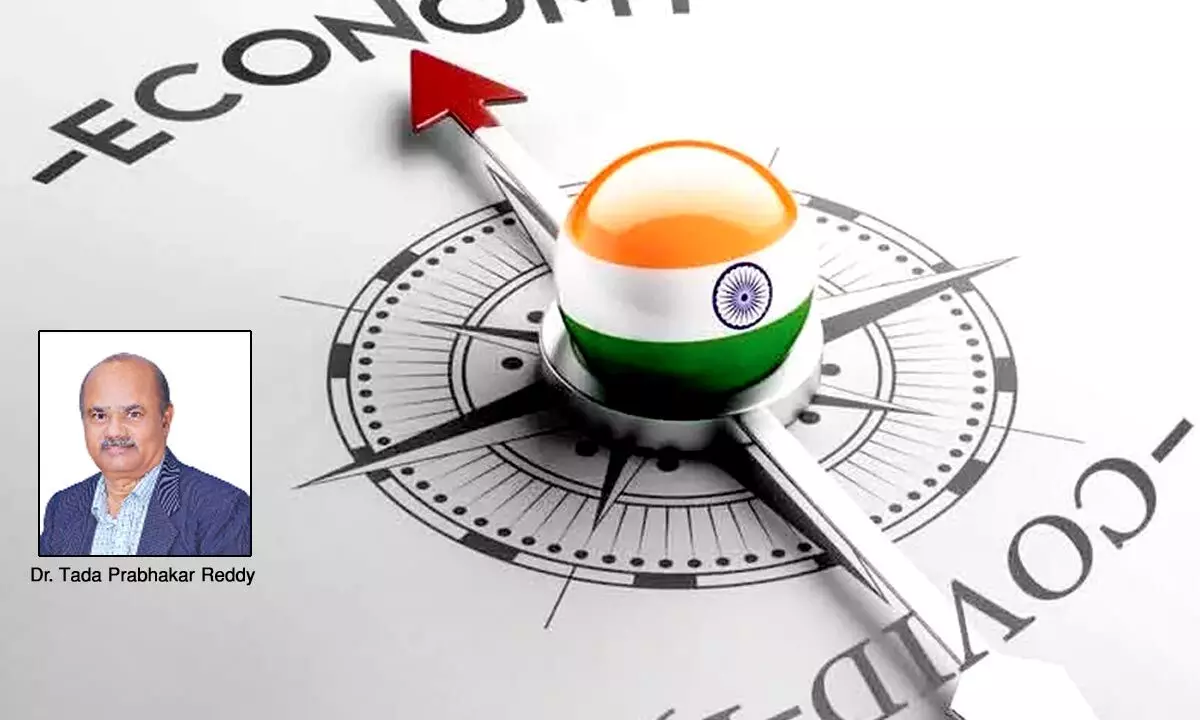Identifying growth levers, consolidating them crucial for the Indian economy
Agriculture, which contributes way above the world average of 6.4%, and allied sectors are the ‘growth engines’
image for illustrative purpose

Finally, commitment from the government to achieve the growth rate is crucial, which is discernible in all its initiatives and efforts
Digital public infrastructure, financial inclusion and technology enabled development in sectors like agriculture and education will give a fillip to economic growth. For that reason, the Union Government is focusing on improving digital public infrastructure so as to achieve digital economy that promotes transparency and accountability leading to less corruption
At the outset, it is pertinent to mention that as growth drivers will contribute to the economic growth of any economy, their identification is essential. In the case of Indian economy the growth engines include ‘performing’ agriculture and allied sectors, improving infrastructure in terms of vast road network, ports, airports, railways, digital public infrastructure and startups, among others.
When infrastructure is upgraded across sectors, numerous ancillary industries come up thus creating employment opportunities and increasing the revenue of a particular city/area. In keeping with this, the Union Budget 2023-24 has given utmost priority to capital expenditure and fiscal consolidation while placing thrust on bolstering the economic growth. Investment is critical to the growth of a sector and huge capital expenditure in budget allocations for different sectors will pave the way for a higher growth.
As per Ministry of Statistics and Programme Implementation (MOSPI) data (as on June 17, 2021) the services sector accounted for 53.89 per cent of total India’s Gross Value Added of Rs. 179.15 lakh crore. Industry, on the other hand, contributed roughly 26 per cent with GVA of Rs. 46.44 lakh crore while the share of agriculture and allied sectors was at 20.19 per cent. From this it can be inferred that agriculture and allied sectors have turned ‘growth engines’ as has been amply demonstrated in different parts of the country. In fact, agriculture sector’s contribution to the economy is significantly higher than the world average of 6.4 per cent. It is the agriculture sector that was resilient and took care of the needs of people during Covid pandemic, be it employment to labour or food security to the rural communities.
Startups are ‘growth levers’ that can make a sizeable contribution to the growth of Indian economy in terms of employment to locals, create demand for goods and services as we are experiencing progress at a rapid rate given that unicorns are operating to profitable levels. They meet the requirement of a product or service and reduces their import to thereby minimise the cash flow to other segments and increases the flow of capital within the market, which is critical for the economy’s growth. In fact, India is a third largest startup ecosystem in the world with more than 77,000 DPIIT recognized startups spread over 656 districts and boosting the production and productivity in many sectors. Secondly, agriculture allied sectors are contributing to the growth rate and providing relief to rural economy. They include horticulture, poultry and dairy, among others.
Digital public infrastructure, financial inclusion and technology enabled development in sectors like agriculture and education will give a fillip to economic growth. For that reason, the Union Government is focusing on improving digital public infrastructure so as to achieve digital economy that promotes transparency and accountability leading to less corruption. Besides, the government is concentrating on addressing the impact of Covid-19 by committing itself to achieve SDGs on a priority basis to establish linkages with economic growth.
Other factors that can boost economic growth of require some policy changes. Imported LNG prices provide an opportunity for India as it has direct impact on commuting, cooking, food and electricity. It is to mention that taking advantage of the decline in global gas prices that plummeted by more than 80 per cent since August 2022 and reducing the burden on household budgets would go a long way in providing relief to the people with reduced gas prices. As a result, it would have its own indirect impact in encouraging some growth engines to boost production as favourable gas prices would have multiplier effect, twice over.
More importantly, the G-20 Presidency and its six priorities will boost the economy in several ways. For instance, accelerated, inclusive and resilient growth entails supporting small and medium enterprises in trade, promoting labour rights and addressing the skills gap, building inclusive agricultural value chains and food systems will certainly lead to economic growth of an economy. In addition, it will create opportunities to harness grass-root innovations and its concomitant contribution to the growth rate of the economy. Therefore, identifying, scouting and documenting the innovations from grassroots are of immense significance in this context.
Finally, commitment from the government to achieve the growth rate is crucial, which is discernible in all its initiatives and efforts.
(The author is a well-known development economist based in Hyderabad)

